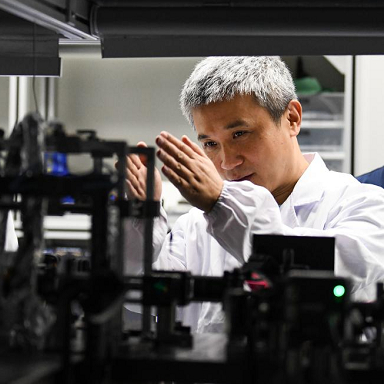Citadel of excellence shines, inspiring innovation
University of Science and Technology of China continues to blaze a path in pioneering research, impressing the world, Yuan Shenggao reports.
The University of Science and Technology of China has paved the way for boosting the country's scientific innovation - through its unique educational model and persistence in frontier scientific research over the past 60 years.

Affiliated with the Chinese Academy of Sciences, the university - also known as USTC - is a top research facility in China.
It was founded in Beijing in 1958, a time when the country urgently needed to strengthen its research for all-round socioeconomic development, but lacked high-level professionals. It moved to Hefei, capital of Anhui province, in 1970.
Since its establishment, USTC has been focusing on developing sciences and technologies in frontier areas and educating future leaders in science and technology for China and the world.
Combining its education and research capabilities with the vast resources of CAS, the university has made a series of bold explorations in reforming higher education, setting a prime example for the country's universities.
In 1978, it established the country's first graduate school. That same year, it established the Special Class for the Gifted Young program, allowing gifted young people to skip a few years of middle school to study at the university. The first of its kind in China, the move was considered a major innovation in the country's higher education system.
It also built a number of facilities for the country's major science projects, such as the National Synchrotron Radiation Laboratory and the Hefei National Laboratory for Physical Sciences at the Microscale.
Two national "big science" facilities, namely the Experimental Advanced Superconducting Tokamak and the Steady High Magnetic Field of the High Magnetic Field Laboratory, are also operated at the university. It has pioneered international collaboration and established partnerships with a large number of renowned institutions and universities worldwide.
Brilliant achievements
Strong fundamental science and academic excellence has made USTC a cradle of breakthroughs in many scientific and technological discoveries. USTC is currently in a global leader in many fields, such as quantum manipulation, nanotechnology, high-temperature superconductivity and speech processing.
Scientific success has included its involvement in the world's first quantum satellite, named Micius, which was launched in 2016.
Its remarkable achievements are also to be seen in interdisciplinary areas, such as artificial intelligence, earth and environmental sciences, and life sciences and health.
A total of 12 research fields at the university have entered the top 1 percent in the global rankings set by the Essential Science Indicators, also known as ESI, an authoritative analysis and evaluation tool for measuring scientific research performance. Among these, USTC's physics, chemistry, materials science and engineering endeavors entered the ESI's top 0.1 percent.
USTC has made top-flight academic and research staff at the core of its future development. It has reached out to young researchers, who complement its many well-established, experienced researchers.
Its students are highly regarded for their creative problem-solving abilities, independence and open thinking.
"The key to USTC's success is that it has kept to its original goal since its establishment, to let the university focus on the essence of research and education," said Shu Gequn, Party chief of the university.
"USTC has long been prioritized cultivating its students, pursuing academic excellence and serving the country's strategic development as the basis for development," Shu noted.
Approaching the peak
As the country faces a promising future, USTC is looking forward to a new chapter of growth.
A singular honor for USTC was its recent inclusion in a list compiled for a new national initiative known as Double First Class, aimed at promoting a number of higher education Chinese institutions as world-class ones.
Following the initiative launch, USTC vowed to vault to the forefront of world's leading universities by 2030 through a raft of innovative reform measures.
Officials say that by then, the university's major disciplines should have earned the reputation of being among the best in the world. First class academic and research staff and students should be attracted to it and trained there, with research results making a great contribution to the world, according to the university.
University officials say that by 2050, USTC will have built itself up into a world-class university with academic excellence and unique features - an originator of fundamental scientific development and innovation in China.
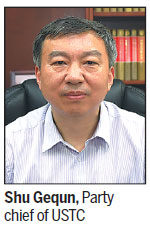
Meanwhile, it will be a focal point for developing the rich talent of its staff and students, the country's science and education center, as well as a "palace" for innovative culture and academic exchange, the university said.
The university said it will develop emerging fields and interdisciplinary activities in the future. New fields of endeavor will be explored, including quantum information science and artificial intelligence.
In addition to establishing a first-class faculty team by improving its quality and quantity, USTC plans to cultivate more innovative and top-flight staff. A long-term mechanism for recruitment, training and teaching and a quality control system will be established.
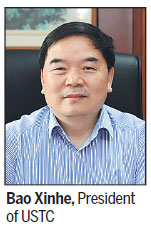
The university also said it will continue to promote the combination of science and education and give full play to concerted efforts in academic research.
USTC added that it will create a favorable environment for innovation and entrepreneurship, and push for more of its scientific results to be used in industry.
"USTC is a university that is driven by innovation," said Bao Xinhe, president of the university.
"Our remarkable development over the past 60 years makes us full of confidence about building a world-class university."

Located in Hefei, the University of Science and Technology has made many breakthroughs for China's frontier sciences.Photos Provided To China Daily

USTC has established a target to become one of the world's top universities by 2030.

The university is home to a number of the nation's key laboratories and other advanced research facilities.
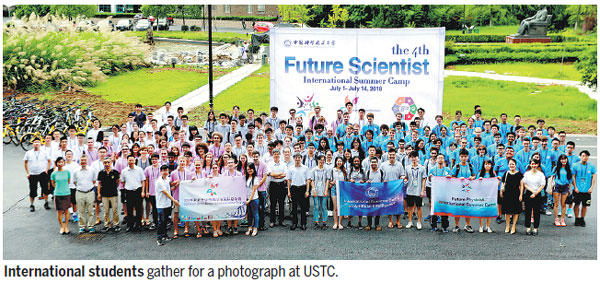
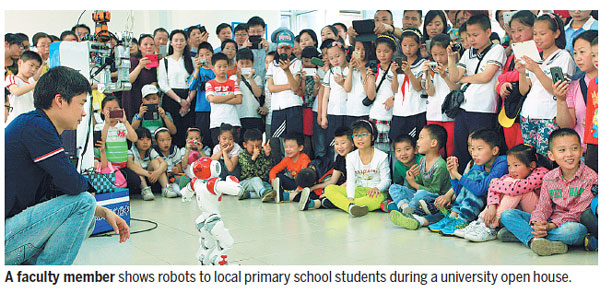
(China Daily 09/19/2018 page6)

